Go Global with Maison Margiela: Japan
Across four continents, Maison Margiela x Reebok’s latest collaboration is essential for exploring roads less traveled
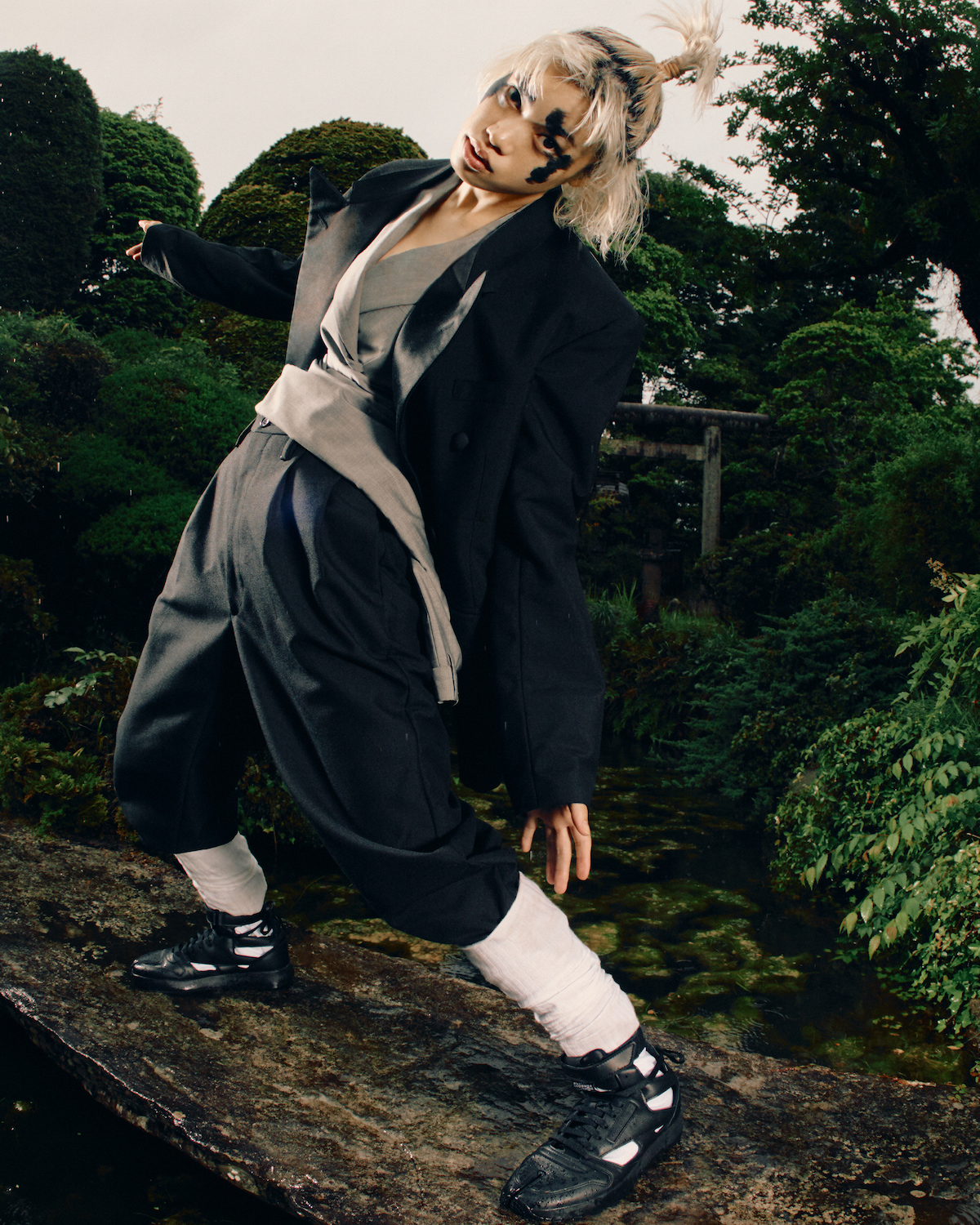
Maison Margiela joins forces with American sportswear brand Reebok for a sneaker collaboration you never thought you needed. Using the concept of decortiqué that is so integral to the luxury haute couture’s brand identity, Maison Margiela reinterprets Reebok’s 1985 Classic Leather runner into the Classic Leather Tabi High, a new high-top leather trainer.
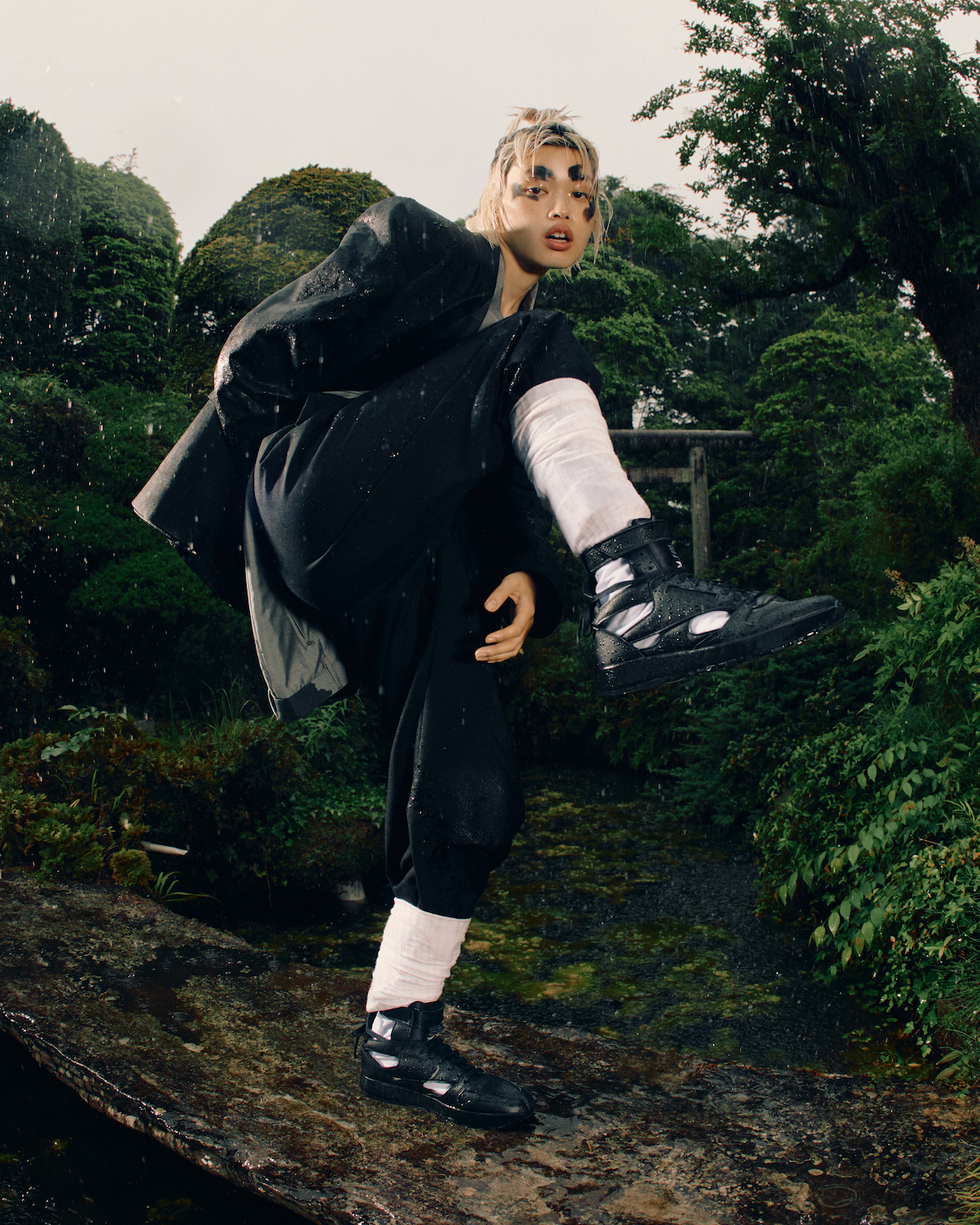
Decortiqué is a technical process pioneered by the French fashion house, whereby a garment is deconstructed to its core structural elements. By employing this technique, Creative Director John Galliano exposes the shoe’s innermost architecture to dig at the brand’s true authenticity. Available in four different color schemes, each iteration of the Classic Leather Tabi High embodies a different personality, yet simultaneously exhibits the innate, adventurous nature of both brands. Photographed in four separate cities by—Sydney, Tokyo, Cape Town and Turkey—the shoe morphs into the attitude of each city. Our second destination touches down in Japan’s Chiba prefecture, located on the shore of Tokyo Bay, let your footwear be as unpredictable as the weather.

VMAGAZINE spoke with Chiba’s location photographer, ISAC and his process, see below for the full interview:
VMAGAZINE: How did you interpret this collection, and what did you set out to capture besides the collection itself?
I: The sneakers in this collaboration are a pair of Tabi designs that can be said to be Margiela’s traditional icon style. I imagined a Japanese samurai in creating the style of the shoot. When I first saw this shoe, I imagined it to be worn by a person with a very strong image, genderless and stylish. We selected standard men’s suits that are stoic and lean rather than feminine and gorgeous, and combined them to complete the 2021 samurai style.
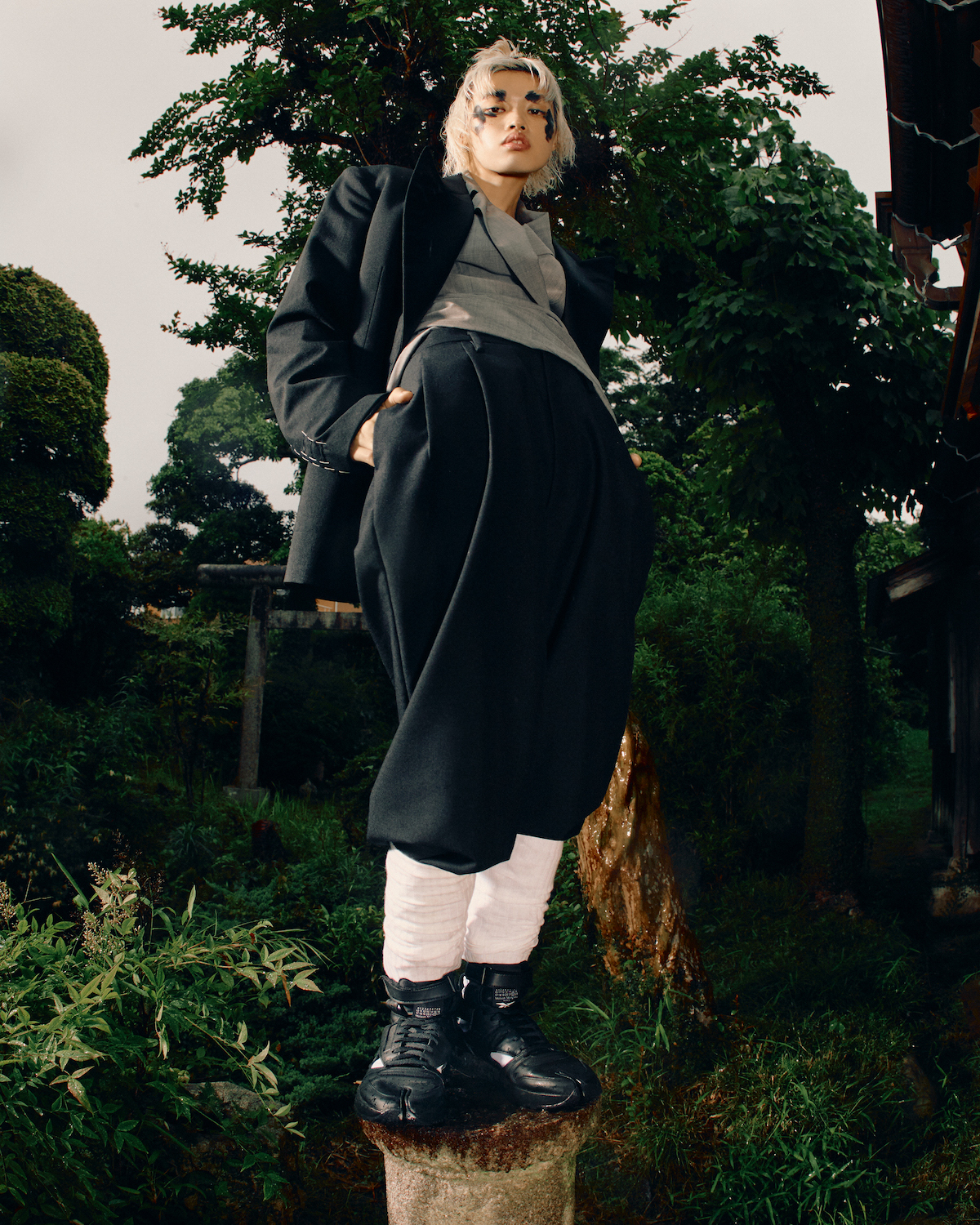
V: What resonates with you about the specific location you chose to shoot? Can you describe it?
I: For this shoot, which started with the theme of Japan, I wanted to show a very Japanese color. I thought it would be nice if it was a quiet place where you could feel some warmth and nostalgia. [Kisarazu] where the Japanese garden is located, has a history of more than 100 years since the Meiji era, and since the building was first built, the changes in its form are almost the same, and the feelings felt by people 100 years ago. It was a space where you could share your line of sight, so to speak, an indirect time slip. A small pond full of green algae and plants caught my eye. The torii gate that looks behind shows the color of Japan very much, and I thought that this place would be very suitable for this shoot.
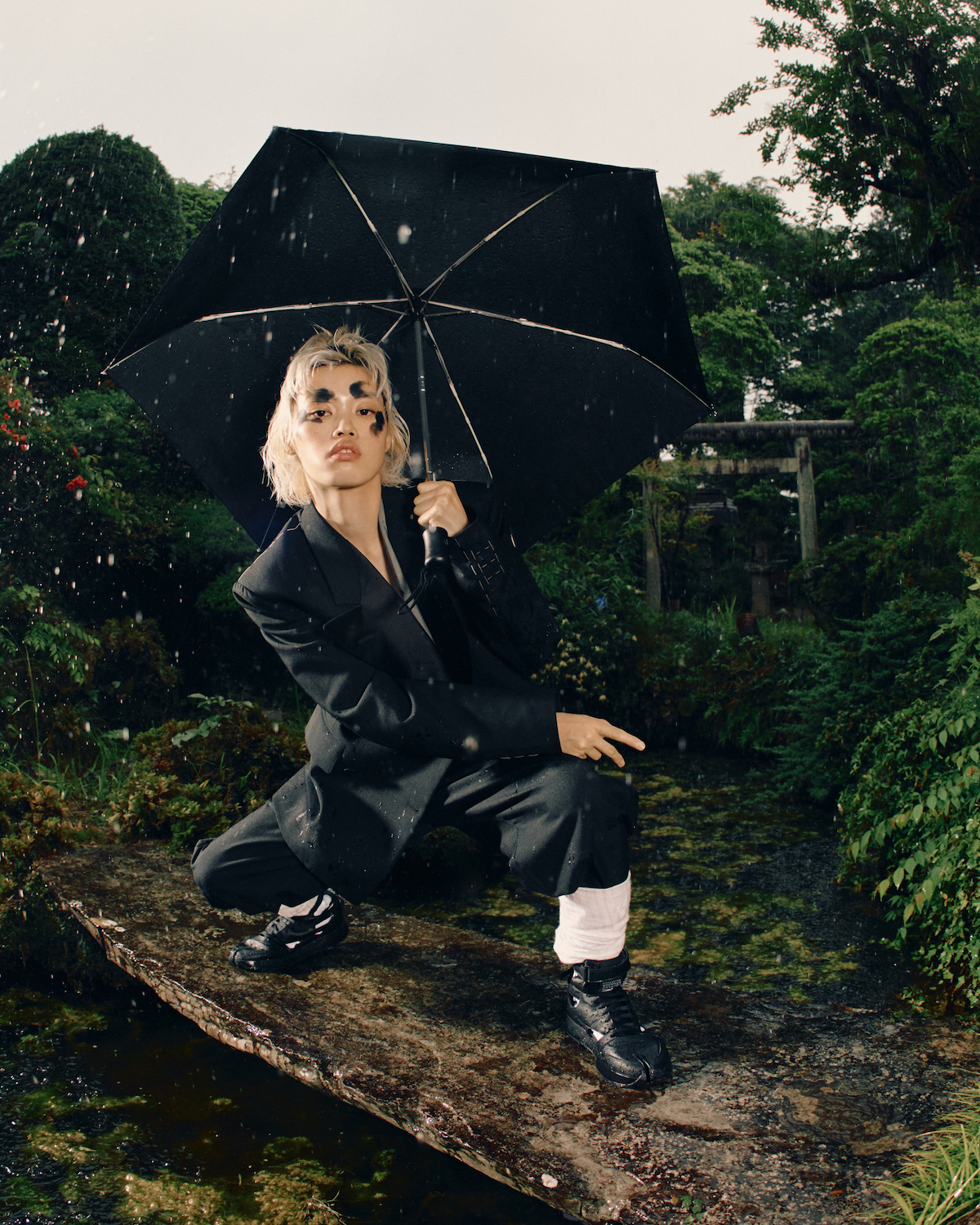
V: If you had to summarize the collection in a few words, how would you describe it?
I: No gender, no age.
V: What was your creative process like? What was inspiring to you or challenging?
I: A week before the shoot, the sudden rainy season came in Japan and it rained every day. It was difficult to predict even tomorrow’s weather. We came to the conclusion that we should take advantage of the unexpectedly rainy situation. At first, I thought that if I used the rain well, I could shoot nicely, but the weather when I actually started shooting was so merciless that I couldn’t continue shooting (laughs). The costume got wet in the rain, the model’s hairstyle wouldn’t last long, and the black make-up melted off, but the shoot proceeded as it was. I wanted to express the undecorated process, such as the selection of the shoot location this time, as it was not intended.
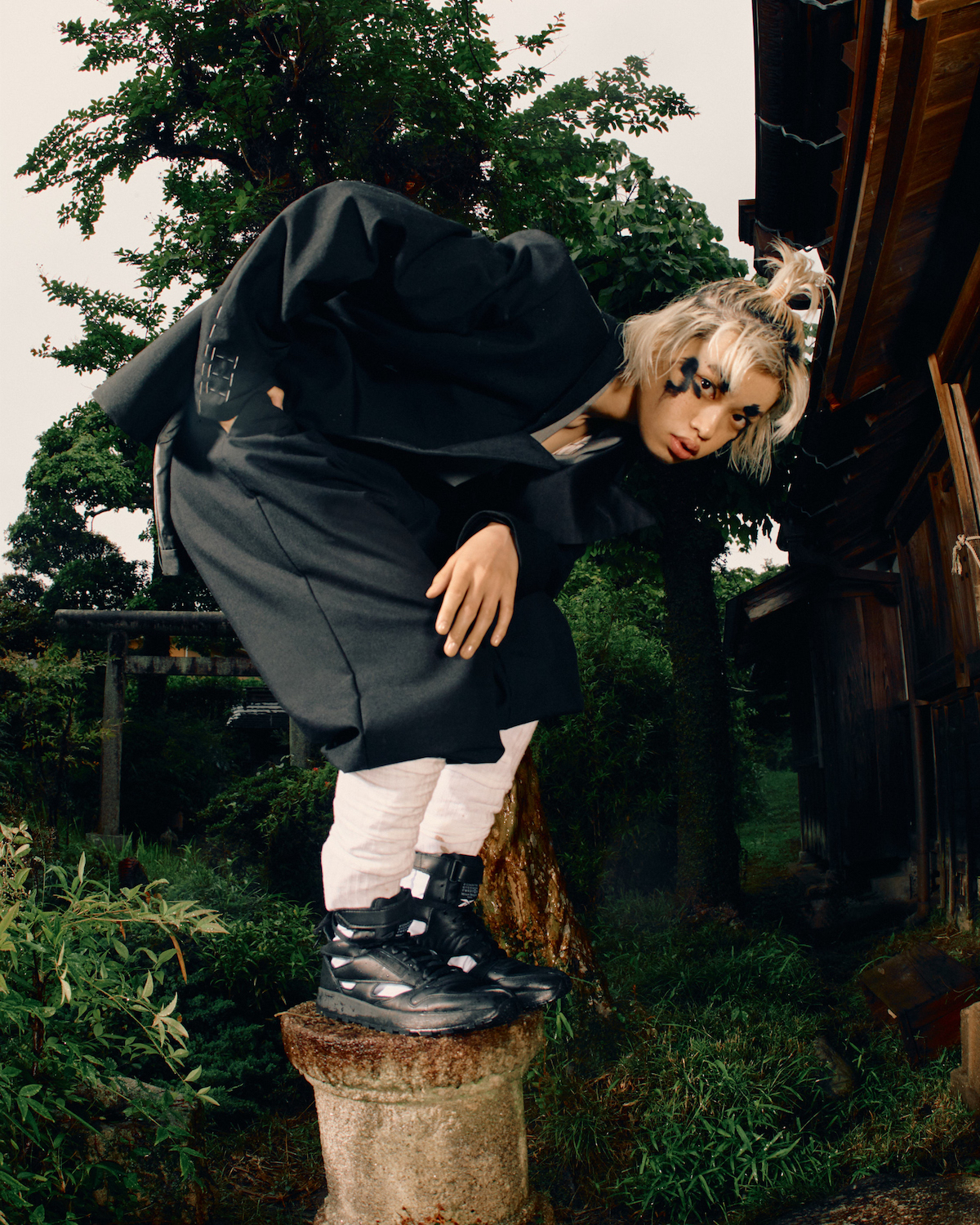
Discover More
